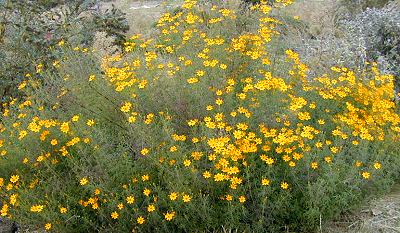It’s getting warmer, with that energizing spring heat, and
we are all glad to be back out in the garden after the last week of
standardized tests. For the
morning, we must all band together to get those tomatoes into the ground! They are getting spindly-tall in those
little pots. We review how to
pinch off the lower leaves and plant the plants deep enough to give the
too-long stems a strong foundation.
Sometimes the kids feel like this these days: they’ve all grown a few
inches when I wasn’t looking. A
few weeks of neglect: vacation, testing, a sick day, and suddenly they no
longer fit in the little plastic boxes of my preconceptions.
I’m somehow assigned to the pair of girls who usually get
under my thin, non-teacher skin within the first few minutes of class. They are strong, bright, willful girls,
with a lot to say (and no sense of when it’s someone else’s turn to say
something). They are also
self-involved to the point of not seeing the full range of hurtful behaviors
they can so easily turn on the less vocal, less opinionated members of the
class. And so, in my role as
enforcer of the general peace when T is trying to get us through some
curricular hurdle, I often have to pull them aside for “reminders,” which they
usually interpret as unfounded attacks on their unblemished characters. Which means, in blunt, that they don’t
like me so much. And if I’m honest
and lay aside my “teacher” hat, I have to admit it’s mutual.
Fortunately, I did remember to wear that “open heart, open
mind” teacher hat today, even though it sometimes chafes my temples. So when T sends the three of us off to
plant our tomatoes, I leave my hopeless sense of “boy, won’t this just be so
fun… not” in the greenhouse. Off we go to our assigned garden bed,
with the seemingly simple task of planting two whole tomato plants. We’ve got our work cut out for us. When we get there, we find a whole
clutch of broccoli plants on the verge of going to seed. Wild Child #1 turns around, and seeing
no adult more likely than myself nearby to give the answer she wants, warily
focuses the full force of her long-lashed eyes and wheedling voice on my
person: “can we eat some, please please?”
“Sure, as much as you want,” I shrug. She needn’t have tried so hard. I generally encourage grazing, and we
just have to pull these plants anyhow if we want to have room for the
tomatoes. The next several minutes
pass with the girls enthusiastically chomping broccoli and chard, and pulling
up the broccoli plants by the roots.
This proves to be so much fun that they keep wanting to pull more and
more, going way beyond our assigned area, rather than settling down to the job
of getting the tomatoes on the ground.
As I expected, the whining sets in, just about when I call
them back to the task at hand.
“It’s soooo hot.”
“Yep, so the sooner we get these plants in the sooner we can
get out of the sun.” I’m masking
my sweat-induced irritation by cleaning up around the edges of the bed they are
theoretically supposed to be “working” in.
Whine, dig, complain, lose focus, work even slower. WC#2: “It’s REALLY hot. Can I get a drink of water?”
“Sure, as soon as we get the plants in and watered, we’ll
take a water break.” (After all,
it’s only two plants—if I were doing it myself it would take about 30
seconds. Not that I’m feeling a
wee bit impatient or anything.)
“But, but, but..”
“Let’s just get it done, guys.” I’m such a mean hard-ass; I can see it in their set jaws and
hear in their whispers.
Whine, dig, complain, lose focus… but eventually, with many
deep theatrical sighs, the tomatoes get into the ground. Once that’s done, there’s no more
asking for water, as the girls have caught sight of the big pile I’ve made of
the broccoli plants they pulled and left helter-skelter all over the path. “Can we do something with that?”
Hmm, that’s not what we’re supposed to be doing, really—we
should clean up the beds more--but I’m sick of nagging them. “Sure, let’s head down and wash it and
trim off the edible bits—we can add them to the salad.” So we all three head into the shade of the
kitchen work area.
The three of us, out of the sun and now with no assignment
requiring timely completion, somehow all simultaneously decide to drop our
annoyance with each other. These
girls, the ones who usually make me close my eyes and breathe slowly before I
speak, are just chatting with me, politely. And I with them.
We fill a big colander with trimmed-off bit of broccoli (yes of course
the stems were woody, but we didn’t care), washed it, mixed it with salad
greens and dressed the whole thing with leftover mango dressing from the Mayday
picnic.
Our salad was beautiful (tough stems and all) and delicious
(if you spit out the stems) and more than that, we had fun doing it. All three of us. Together. The wild girls are getting taller, and more mature,
and if their stalks are to have the proper support, I’ve got to let them out of
the little boxes I’ve been keeping them in, and shore them up with some good
soil, and watch them set their own roots.
We’ve all got our jobs cut out for us here in the garden; just sometimes
I’m looking too closely at the task at hand to see the bigger work. (Thank goodness for the strong-willed
girls who can push at my edges.)




























